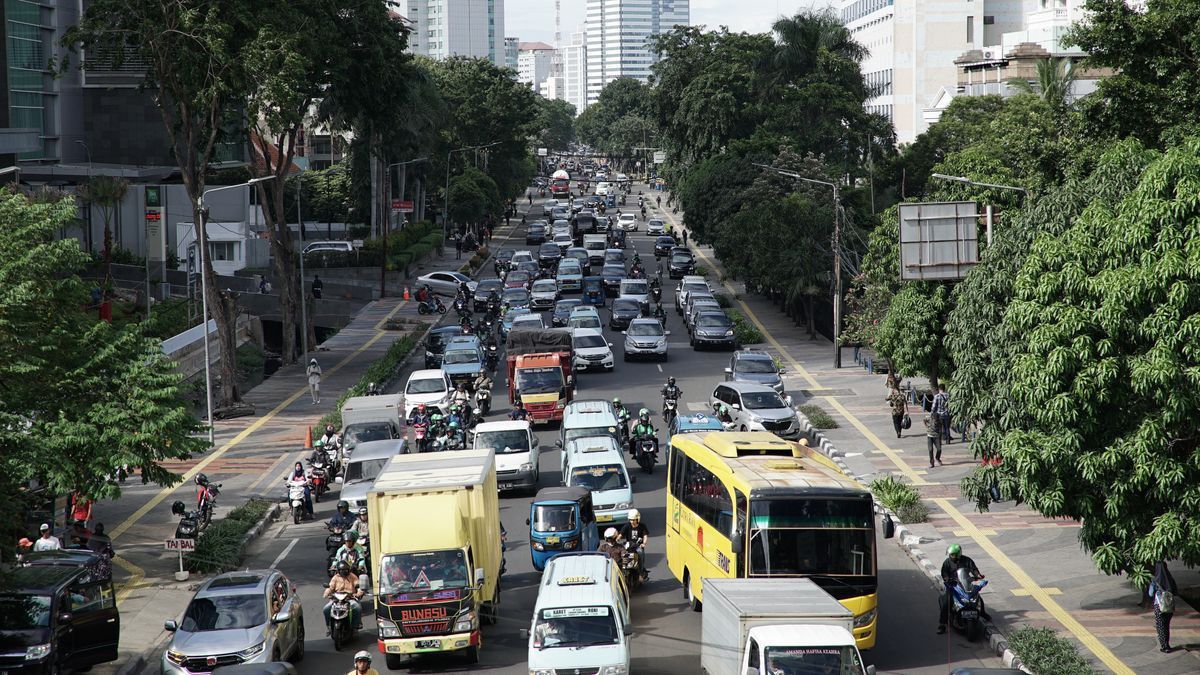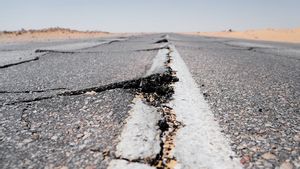JAKARTA - GPS device company, Tomtom, has released a survey of congestion figures in a number of national capitals, including Jakarta. As a result, the congestion rate in Jakarta has not decreased over the past year.
Judging from its official website, in 2018, Tomtom said that Jakarta's congestion rate was 53 percent. In 2019, congestion levels have stagnated at the same rate.
In fact, DKI Jakarta Governor Anies Baswedan has implemented vehicle restrictions with an odd-even system since September 9, 2019, with the aim of overcoming congestion problems.
Head of the DKI Jakarta Transportation Agency, Syafrin Liputo, has not been able to comment much on this matter. He will conduct a study of the survey results.
"I haven't read the report yet. I'll study it first," said Syafrin when met at City Hall, Jalan Medan Merdeka Selatan, Central Jakarta, Thursday, January 30.
According to Syafrin, the odd-even application on 25 streets of the capital city should be able to reduce vehicle density.
"So, from 25 km per hour, the average increases to 33 km per hour. Then, there is a reduction in traffic volume by 30 percent," he said.
Not to mention, DKI has also implemented a strategy to reduce the arrival of vehicles from areas outside Jakarta that pass through toll roads. This reduction is by blocking vehicles with number plates that do not match odd-even dates on the roads that enforce the policy.
"That should have reduced traffic significantly," he said.
On a separate occasion, Transportation Policy Analyst Azas Tigor Nainggolan views the 2020 Sustainable Transport Award received by DKI in America as questionable. This is because, he said, the DKI Jakarta Provincial Government has not been able to suppress the use of private vehicles on the streets.
"It is very unfortunate that Anies has not made any changes for one year. There must be an evaluation from within. Because if I see infrastructure development for transportation in Jakarta, it is fairly massive," said Tigor.
The 2019 Tomtom survey involved at least 416 cities from 57 countries on six continents. His research involves various elements such as motorists, government policies, urban planning, to vehicle production.
The first rank with the highest congestion rate is in Bengaluru, India with a congestion rate of 71 percent. Second, Manila, Philippines with a congestion level of 71 percent. Third, Bogota, Colombia with a congestion level of 68 percent.
Meanwhile, Jakarta is in the tenth position of the most congested cities in the world. The congestion rate in Jakarta has not decreased, but its ranking has decreased from 2018 which was ranked 7th.
This is due to the addition of 13 new cities surveyed by Tomtom. As of 2018, there were 403 surveyed and in 2019 it increased to 416.
Of the 13 cities that have just been added, three of them immediately overtook a higher level of congestion than Jakarta. These cities include Bengaluru from India, Manila from the Philippines, and Pune from India.

In the official Tomtom website, it also mentions that the congested time in Jakarta in 2019 occurred on Friday, 17.00-18.00 WIB. He asked Jakarta residents to avoid that time for driving comfort.
Also, in 2019, the day of the least traffic jam is June 4. This day coincides with the Eid al-Fitr holiday when Jakarta residents are busy doing their homecoming to their hometowns.
Then, for the most congested day during the year falls on March 6, 2019. The level of congestion even reaches 91 percent. Even though the average in one year is 53 percent.
Other data shows that during working hours, Monday mornings are the most congested times of the day. Meanwhile, at night, Friday is the most congested time with an average of more than 90 percent.
The English, Chinese, Japanese, Arabic, and French versions are automatically generated by the AI. So there may still be inaccuracies in translating, please always see Indonesian as our main language. (system supported by DigitalSiber.id)













